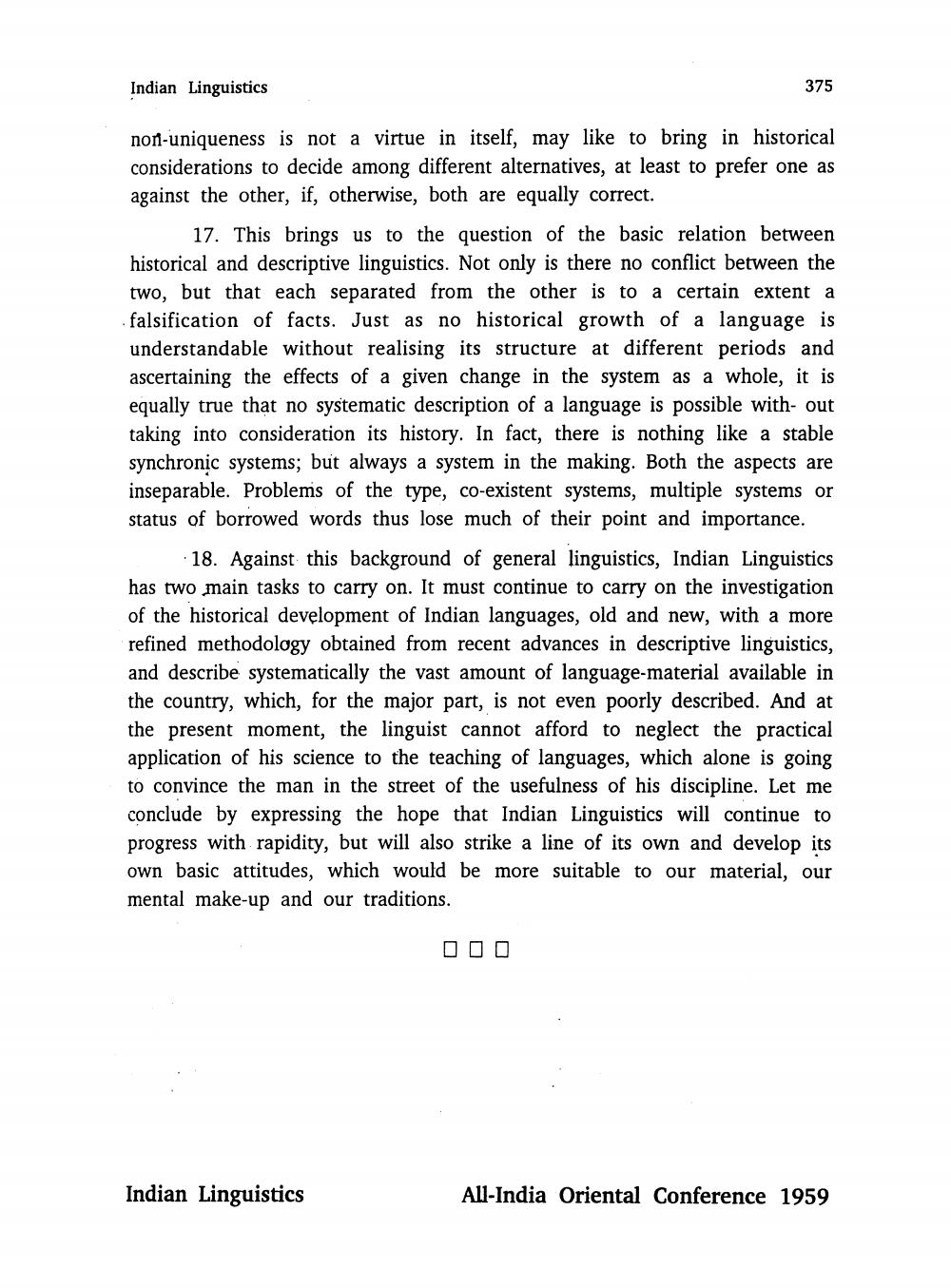________________
Indian Linguistics
375
non-uniqueness is not a virtue in itself, may like to bring in historical considerations to decide among different alternatives, at least to prefer one as against the other, if, otherwise, both are equally correct.
17. This brings us to the question of the basic relation between historical and descriptive linguistics. Not only is there no conflict between the two, but that each separated from the other is to a certain extent a falsification of facts. Just as no historical growth of a language is understandable without realising its structure at different periods and ascertaining the effects of a given change in the system as a whole, it is equally true that no systematic description of a language is possible with- out taking into consideration its history. In fact, there is nothing like a stable synchronic systems; but always a system in the making. Both the aspects are inseparable. Problems of the type, co-existent systems, multiple systems or status of borrowed words thus lose much of their point and importance.
18. Against this background of general linguistics, Indian Linguistics has two main tasks to carry on. It must continue to carry on the investigation of the historical development of Indian languages, old and new, with a more refined methodology obtained from recent advances in descriptive linguis and describe systematically the vast amount of language-material available in the country, which, for the major part, is not even poorly described. And at the present moment, the linguist cannot afford to neglect the practical application of his science to the teaching of languages, which alone is going to convince the man in the street of the usefulness of his discipline. Let me conclude by expressing the hope that Indian Linguistics will continue to progress with rapidity, but will also strike a line of its own and develop its own basic attitudes, which would be more suitable to our material, our mental make-up and our traditions.
OOO
Indian Linguistics
All-India Oriental Conference 1959




